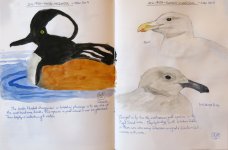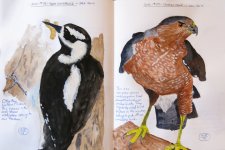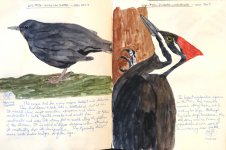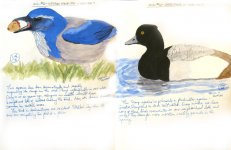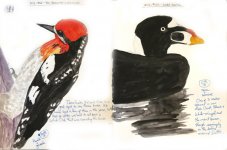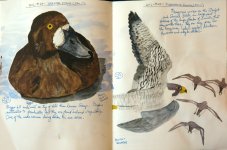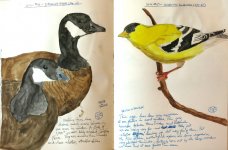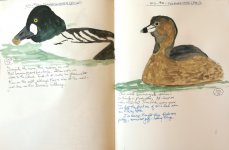JTMB
Well-known member
Thanks so much Mayoayo, Ken, Colleen, Mike and Bigshent!
I'm still unable to get on the website from my regular computers (two of them) since the server change and am no longer getting e-mail notifications of posts either, sigh. Fortunately I can still access the site with my wife's computer - why hers works and my two don't (they're all on the same wireless network) is beyond me.
Anyway, I hope everyone had a very Merry Christmas and shortly a very Happy New Year.
Here are some more sketches of my 2012 species sightings. I'm less than 25% through 2012 and tomorrow is 2013 - good thing the only timetable on these is my own, which is obviously pretty flexible! :-O
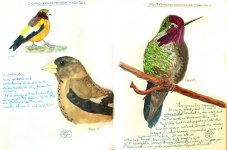
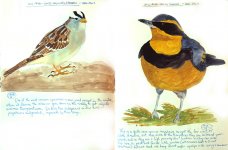
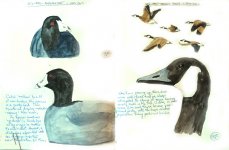
I'm still unable to get on the website from my regular computers (two of them) since the server change and am no longer getting e-mail notifications of posts either, sigh. Fortunately I can still access the site with my wife's computer - why hers works and my two don't (they're all on the same wireless network) is beyond me.
Anyway, I hope everyone had a very Merry Christmas and shortly a very Happy New Year.
Here are some more sketches of my 2012 species sightings. I'm less than 25% through 2012 and tomorrow is 2013 - good thing the only timetable on these is my own, which is obviously pretty flexible! :-O







